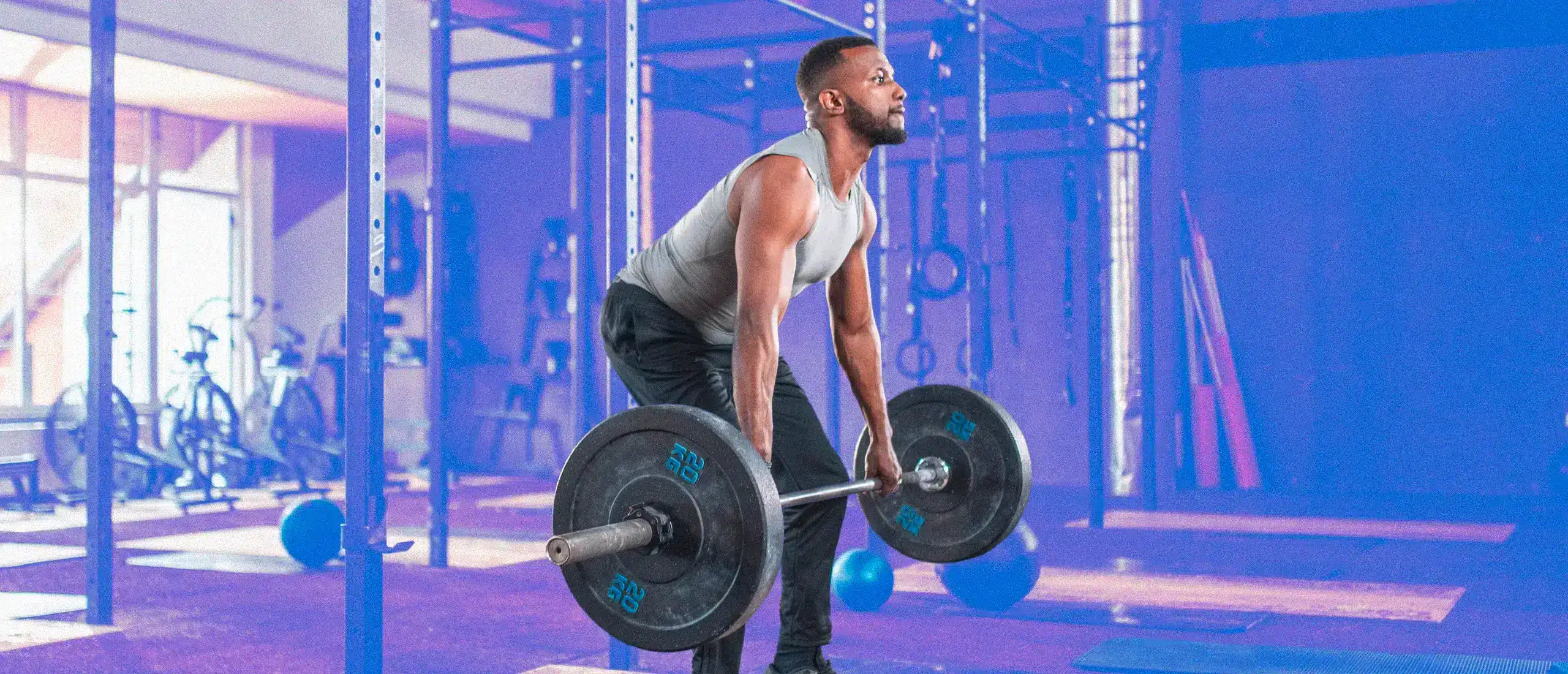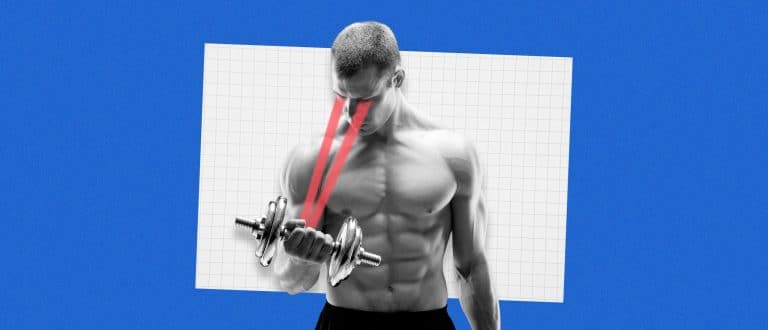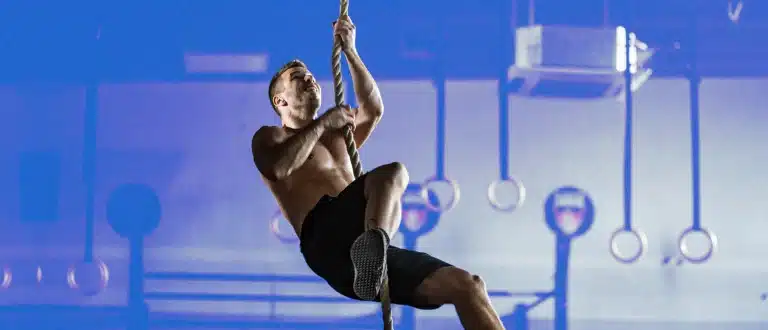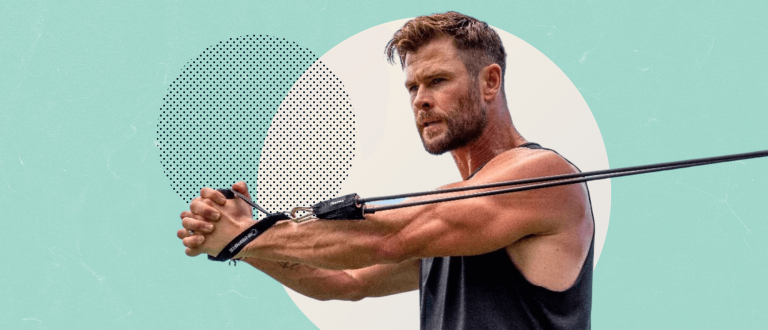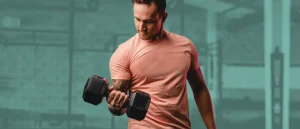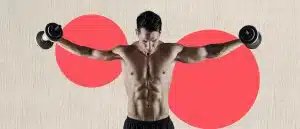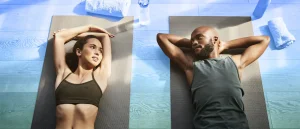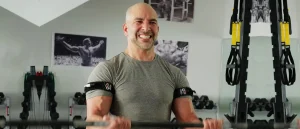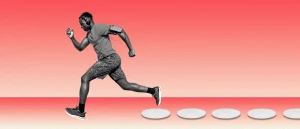Ask a Trainer: What Are Compound Exercises?
- By Sydney Bueckert, NASM C.P.T., C.E.S., F.N.S., G.P.T.S.
- October 26, 2023
30-Second Takeaway
- Compound exercises target multiple muscle groups at once which burns more calories, increases strength and muscle gains, and yields more results in less time.
- Examples of compound exercises include popular compound lifts like squats and deadlifts, as well as bodyweight exercises like push-ups and pull-ups.
- Because compound exercises require multiple muscle groups coordinating to move together, they mimic the way you move in everyday life, boosting your functional fitness.
When it comes to building strength and muscle, there are many ways to get from point A to B. While strength training techniques like slow eccentrics, blood flow restriction training, or bulking and cutting can help, they should really only serve as the cherry on top of a solid strength training program. How do you know if your training program is, well, solid? The generous use of compound exercises is a good indicator, according to personal trainer Daniel McKenna, CPT.
Compound exercises target multiple muscle groups, meaning you can lift more weight (and thus, build more strength) in less time. Plus, they echo the way you move in real life, meaning they’ll help you build functional fitness—or your ability to complete daily tasks with ease. Here’s everything you need to know.
What Are Compound Exercises?
“Compound exercises, also known as multi-joint movements, are any movement where you’re using multiple muscles or muscle groups (and joints) at a time,” explains McKenna. Take deadlifts, for example. Many people think of deadlifts as primarily a lower body lift. But during a deadlift your upper body, back, hamstrings, glutes, and core fire up as you move your hip, knee, and ankle joints to lift the weight and then lower it.
Compound exercises range from fairly standard to creative and complex. They include all the big-name lifts—like bench presses, squats, deadlifts, and rows—that serve as a shorthand for overall strength. Bodyweight exercises like push-ups and pull-ups, which require most of your major muscle groups to pitch in to some degree, are designated similarly.
Compound vs. isolation exercises
“An isolation exercise is the opposite of a compound exercise: Where a compound exercise works multiple muscle groups and joints, an isolation exercise works just one muscle group and one joint,” says McKenna. A biceps curl is a perfect example of an isolation exercise. The aim of a biceps curl is to target one muscle group (your biceps) by moving one joint (your elbow). Sure, a handful of muscles in your forearm and upper arm fire on for added stability, but your biceps do the majority of the work.
Another key difference between compound and isolation exercises is how they’re performed. Compound exercises are most often done with free weights (barbells, dumbbells, and kettlebells) because they allow for the freedom of movement needed for complex, coordinated exercises like squats and bench press. Isolation exercises, on the other hand, are often easier to perform using weight machines that make up most of the gym floor. For example, hamstring curls are much more practical and safe to perform using a machine (though, a nordic bench will show your hamstrings who’s boss).
Compound Exercise Benefits
Compound exercises are a game-changer for your workouts and overall fitness. Here’s why.
Boost functional fitness
“Learning how to intentionally work multiple muscle groups together is key for improving your functional fitness,” says McKenna. During a compound exercise your muscle groups have to coordinate similarly to how they do in everyday life. For example, a squat doesn’t look much different from the way you sit in a chair, and a deadlift mimes the way you hinge to pick something up off the ground. Drilling compound exercises for form, and under heavy loads, will increase your mobility and reduce your risk of injury in the gym and in everyday life.
Full-body workout
Compound lifts engage multiple large muscle groups, meaning they’re a smarter move for targeting your full body. For example, rather than stacking your routine with isolation moves to try to hit as many muscle groups as you can, try three compound lifts. “Deadlifts, bent over rows, and pull-ups work significantly more muscle groups than three isolation moves ever will,” McKenna explains.
Lift more weight (and thus, build more strength)
To get stronger, you have to lift heavy. “Since compound exercises engage more muscles, you have the power to lift more weight, boosting overall strength and muscle development,” says McKenna. Plus, lifting heavy and targeting large muscle groups are two factors that increase testosterone, which also aids in muscle growth. Studies have shown the more muscle worked during your workout, the greater your testosterone response after your workout (1).
Burn more calories
The more muscles you engage, the more calories you burn—which makes compound moves the perfect candidate for torching calories. Plus, the more muscle mass you have, the faster your metabolism is at rest (2). In other words, by building muscle through compound exercises, you increase your calorie burn even when you aren’t working out.
Save time
“Compound exercises target multiple muscle groups simultaneously, allowing you to get more done while maintaining results,” says McKenna. The time it takes you to do three sets each of machine chest flies, tricep extensions, and shoulder presses is significantly more than a trio of barbell bench sets. And while the muscles worked aren’t a perfect one-to-one, if you’re strictly budgeting your gym time, every minute counts.
The Best Compound Exercises
If you want to max out the functional strength and calorie-burning benefits of your next workout, these staple compound exercises will help you make the most of your time.
Back squats
Squats are powered from the hips and knees which fires up the quads, hamstrings, glutes—all while depending on your back and core to support the load. Since squats are a functional component of so many other exercises at the gym, they’re a good one to master if you’re hoping to boost functional fitness.
How:
- Grab a barbell a little wider than shoulder-width apart. Rest the barbell on your shoulders behind your head, and stand up to unrack the barbell.
- Stand with your feet slightly wider than shoulder width apart and toes pointed straight forward or slightly out.
- Maintain an upright torso with your core engaged as you push your hips back into a squat, bending your knees to bring your thighs to around 90 degrees (if possible).
- Push through your heels and squeeze your glutes to return to standing.
Pro Tip:
If you struggle with traditional back squats try a back squat alternative like goblet squats or split squats to take pressure off your back and knees while working a similar range of muscle groups.
Lunges
Like squats, lunges work your quads, hamstrings, glutes, and core, but they add a unique unilateral component—firing up a host of small, supportive muscle groups that help you stay stable as you fight to balance on one leg. Walking lunges are great for building coordination. Grab a heavy dumbbell in each hand to challenge your grip strength simultaneously.
How:
- Keeping your chest up, hips, knees, and ankles square, take a long step forward with one leg, bending your front knee until the back knee almost touches the ground.
- Stand up explosively through the front leg to return to your starting position and repeat with the other leg.
- Hold a dumbbell in each hand or load up your back with a barbell to increase the challenge.
Pro Tip:
If walking lunges are giving you trouble, imagine walking on train tracks rather than a tightrope. In other words, keep a little distance between your legs. It boosts stability making it easier to maintain your balance as you shift from one foot to the other.
Deadlifts
Deadlifts are huge for building your posterior chain or the muscles on the backside of your body like your hamstrings, glutes, and back. Hip hinging is an essential functional movement you use whether you’re carrying groceries or picking your kid up off the ground, and you’ll master it here.
How:
- Stand with your feet shoulder-width apart, and walk your shins so they’re resting against a plate-loaded barbell or trap bar.
- Squat down to grab the bar and pull up on the bar without leaving the ground—roll your shoulders down, keep your torso upright, and activate your core to create tension between you and the bar.
- Push the floor away from you to lift the weight, shaving your legs with the barbell.
- Pause at the top and reverse the movement with control.
Pro Tip:
Deadlifts killing your back? Swap it for a trap bar deadlifts or Romanian deadlifts.
Bench press
Activating nearly all the muscles in your upper body, and using all the joints from your shoulder to your fingers, the bench press is the quintessential upper body push move. Powering the bar up depends on your chest, triceps, and shoulders, as well as your mid-back and core to stabilize.
How:
- Lay flat on a bench, with your knees bent, pushing your feet into the floor.
- Grab the bar, about a thumbs width from the edge of the knurling.
- Unrack the weight, shifting the weight so it’s directly above your shoulders.
- Slowly lower the bar until it touches your chest, keeping your elbows at around a 45-degree angle.
- Pause, then explosively press the weight back up.
Pro Tip:
Sometimes the angle of a barbell can be tough on your wrists. If so, swap the barbell for dumbbells. This simple shift will allow you to rotate your wrists slightly out to match the angle of your elbows, reducing the tension.
Pull-ups
Not every compound exercise requires pushing or pulling an external weight. Bodyweight exercises like pull-ups can make just as much impact, and are a great test of absolute strength.
How:
- Grab a pull-up bar with an overhand grip and hands slightly wider than shoulder-width apart.
- Lift your feet from the floor, hanging with straight arms.
- Pull yourself up by flexing the elbows, while pinching your shoulder blades together, bracing your core.
- When your chin passes the bar pause, then slowly lower to the starting position.
Pro Tip:
Pull-ups are hard. Start with dead hangs, simply hanging from the pull-up bar and aim to increase your hang time over time. You can add things like scap pull-ups, inverted rows, and lat pulldowns to build your way up to a full pull-up.
Bent over rows
Bent over rows are killer for working your backside—they hit your lats, the middle and lower traps, rhomboids, posterior deltoids, and biceps all in one go. Bonus: Your glutes and core will be working hard to keep you locked into a solid hip hinge position throughout the entire set.
How:
- Grab a pair of dumbbells with an overhand grip, hands slightly wider than shoulder width apart.
- Hinge at the hips until your chest is parallel to the floor and the dumbbells are hanging at your shins, engaging your core to protect your lower back.
- Row the weight upwards in an arc shape towards your hips.
- Pause and slowly lower the dumbbells back to the starting position.
Pro Tip:
Rather than pulling explosively to increase the range of motion at the top of each rep (which heaps added strain on your shoulder joint), perform each rep slow and controlled, working with the shoulder range of motion you have, and focusing on using your lats to pull the weight.
Shoulder press
Next time you need to put something heavy on a high shelf, shoulder presses have you covered. Of course, they work your shoulders. But your core also fires up to keep your upper body stable, your chest and triceps help to push the weight overhead, and your lats and biceps help you lower the weight with control.
How:
- Get into a half-kneeling position, like a low lunge with the knee of your back leg planted on the ground directly below your hip, and your back shin resting comfortably on the ground.
- Hold a kettlebell in a front-rack position with your hands around the base, and handle pointing down.
- Brace your core and roll your shoulders down and back, opening your chest.
- Press the kettlebell overhead.
- Pause then lower the weight with control.
Pro Tip:
Can’t hang with a barbell? Use dumbbells or kettlebells (as shown) to lower the load, reduce muscle imbalances, and increase grip options.
Tips For Better Compound Exercises
While there’s not much of a downside to getting stronger faster, there’s a few things you’ll want to keep in mind when giving compound exercises a go.
Do compound exercises first
Put compound moves at the top of your workout when you have the most energy and save isolation moves for later. “Compound exercises require the most strength and energy to complete. If you wait until the middle or end of your workout to start them, your body may be tired and your form could be weaker which increases your risk of injury,” explains McKenna.
Watch your form
Because compound exercises are more technically advanced than single-joint exercises, your form will be the first thing to go when you’re tired. If you’re struggling, cut back on weight or drop down to bodyweight only. “Trust your instincts. Start slow and light and work your way up to heavier and faster. If a weight feels too light or too heavy, it probably is,” says McKenna.
Be open to modifications
It’s also important to remember just because compound exercises are generally better for targeting more muscles and building overall strength, it doesn’t mean every compound exercise is right for you. For example, back squats are a great exercise, but if you have pre-existing injuries or mobility restrictions, they can put your back, knees, and feet in sketchy positions. The good news: Switching up the placement of the load, finding alternative exercise variations, or using different equipment are all easy ways to tweak an exercise to your needs.
About the Expert: Daniel McKenna is a celebrity fitness trainer, founder of the Irish Yank Society, and creator of the Irish Yank Fitness App. With nearly a decade of experience, the Irish Gaelic football athlete turned celebrity trainer is on a mission to help as many people as possible find joy in daily movement. His unique approach to fitness combines foundational training techniques with positive reinforcement to help clients see and feel noticeable changes.
References
1. Riachy, R. et al. (2020). Various Factors May Modulate the Effect of Exercise on Testosterone Levels in Men.
2. Wescott, W. et al. (2012). Resistance Training is Medicine: Effects of Strength Training on Health.



